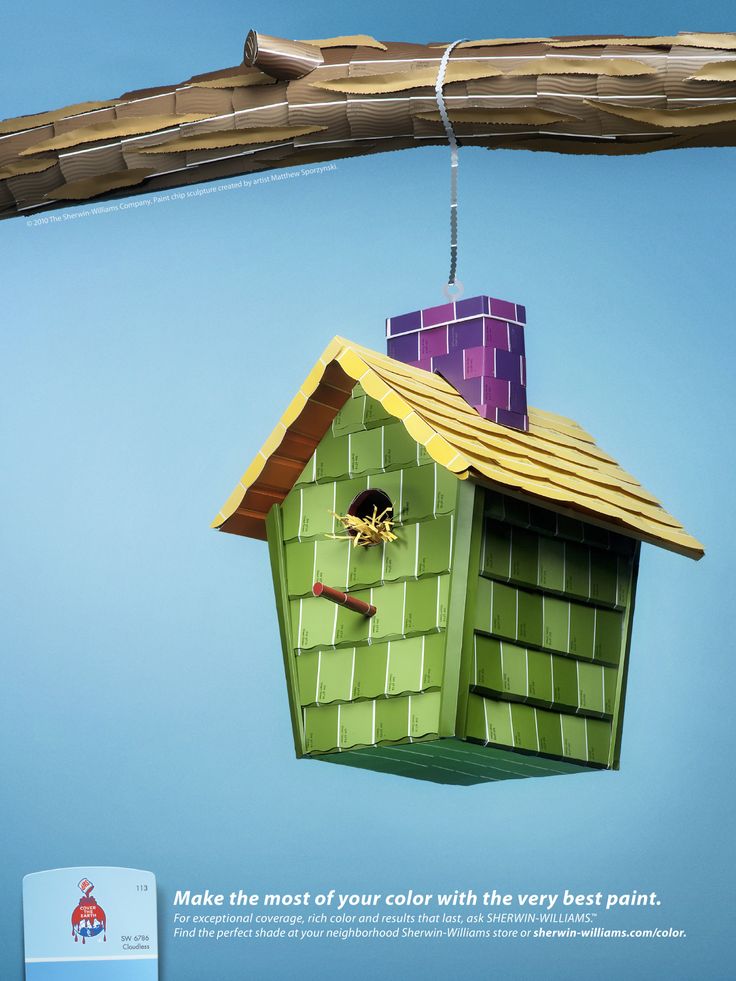Bathroom Tile Cleaning Hacks: Say Goodbye to Stubborn Soap Scum
If you’ve ever looked down at your bathroom tile and thought, “How did it get this grimy so fast?”, you’re not alone. Soap scum, hard water stains, and mildew are the usual suspects behind the dull and dirty look of your once-sparkling tiles. Fortunately, there are a few tried-and-true bathroom tile cleaning hacks that can restore their shine without hours of scrubbing—or harsh chemicals.
Whether you’re prepping your home for guests or just tired of the buildup, here are some simple, effective strategies to say goodbye to stubborn soap scum for good. For even more tips and tricks, check over here and discover additional ways to keep your bathroom looking spotless with minimal effort.
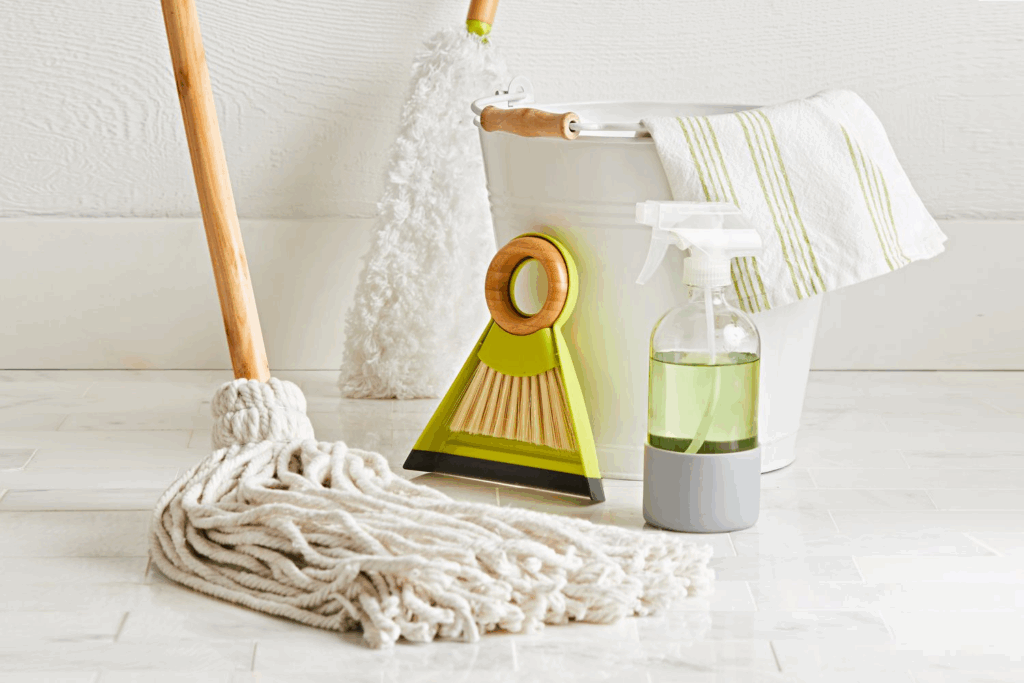
- Vinegar and Baking Soda: The Dynamic Duo
One of the most powerful combinations for cutting through soap scum is the classic mix of white vinegar and baking soda. It’s natural, safe, and incredibly effective.
How to use it:
Sprinkle baking soda directly onto the dirty bathroom tile.
Spray or pour white vinegar over the baking soda. It will fizz (don’t worry, that’s the magic happening).
Let it sit for 10-15 minutes.
Scrub with a soft brush or sponge.
Rinse thoroughly with warm water.
This combo not only cuts through soap scum but also helps deodorize and whiten your tiles.
- Lemon Juice for Shine and Freshness
Lemon juice is naturally acidic, which makes it great for breaking down mineral deposits and soap buildup. Plus, it smells fantastic.
Hack: Mix equal parts lemon juice and water in a spray bottle. Spray the solution onto your bathroom tile and let it sit for 5-10 minutes. Then scrub with a microfiber cloth or sponge.
For extra stubborn stains, sprinkle a little salt on a lemon half and rub it directly on the tile surface. Rinse and dry for a fresh, clean finish.
- Dish Soap and Vinegar Spray
Dish soap isn’t just for dishes—it’s designed to cut through grease, which is perfect for tackling the oily residue in soap scum.
Recipe:
Mix 1 cup of vinegar with 1 cup of dish soap in a spray bottle.
Heat the vinegar in the microwave first for better results (warm, not boiling).
Spray generously on the bathroom tile and let it sit for 20-30 minutes.
Wipe with a sponge or soft brush, then rinse clean.
This solution is especially effective in showers and tubs, where soap scum tends to accumulate the most.
- Steam Cleaning for a Chemical-Free Clean
If you’re looking for a deep clean without using any chemicals at all, steam cleaning might be your best bet. A handheld steam cleaner can loosen dirt, soap scum, and mildew from bathroom tile surfaces and grout lines.
How to do it:
Fill your steam cleaner with water as directed.
Hold the nozzle close to the tile and grout, and let the steam do the work.
Wipe with a microfiber cloth to remove loosened grime.
Steam cleaning not only tackles visible buildup but also kills bacteria and mold spores lurking in grout lines.
- Hydrogen Peroxide and Baking Soda Paste for Grout
Soap scum often hides in the grout lines between your bathroom tile, making them look dingy and old. A paste made from baking soda and hydrogen peroxide can help whiten and brighten grout effectively.
Directions:
Mix ½ cup baking soda with ¼ cup hydrogen peroxide to form a paste.
Apply it to grout lines using an old toothbrush.
Let it sit for 15-20 minutes.
Scrub lightly and rinse with warm water.
This method is particularly useful for reviving tile floors and shower walls that have lost their luster over time.
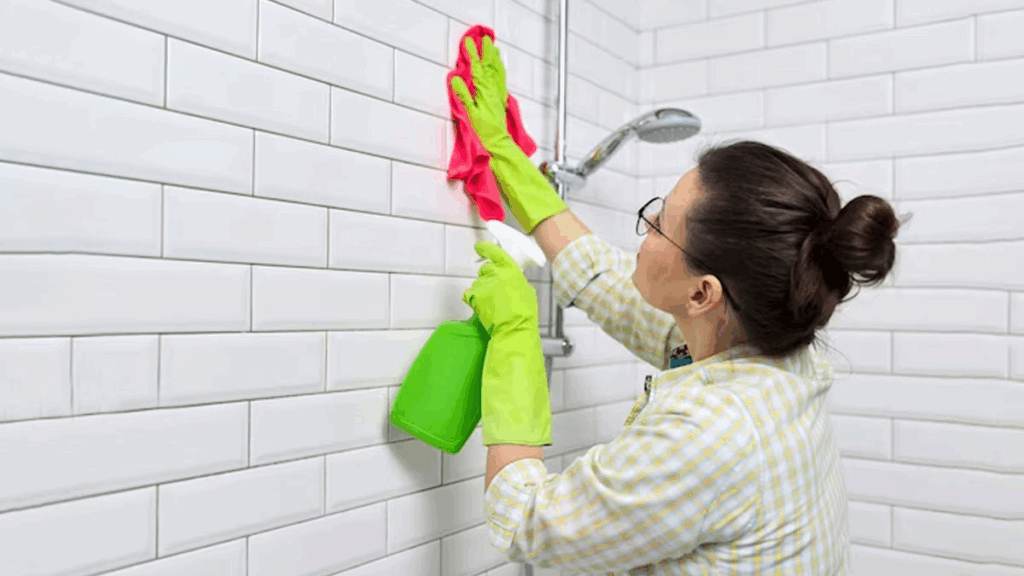
- Prevent Soap Scum Before It Starts
Prevention is key. After you’ve tackled your current soap scum situation, keep it from coming back with these quick daily habits:
Use a squeegee: After each shower, run a squeegee over your bathroom tile walls to remove excess water and prevent buildup.
Ventilation: Use an exhaust fan or open a window to reduce moisture, which helps prevent mildew and mold growth.
Switch to liquid soap: Bar soap leaves behind more residue than liquid alternatives.
Keeping your bathroom tile looking pristine doesn’t require harsh chemicals or professional cleaners. With these simple hacks, you can tackle soap scum and grime using ingredients you likely already have in your pantry. Not only will your bathroom shine, but you’ll also save time, money, and effort.
Next time you notice your tiles looking a little lackluster, remember: a little vinegar, baking soda, and elbow grease can go a long way. Happy cleaning!
Tile and Grout Cleaning: Restoring the Original Look of Your Floors
Over time, even the most stunning tiled floors can lose their luster. Dirt, spills, and grime find their way into the porous grout lines, dulling the once-vibrant tiles. Homeowners may notice their floors looking aged or stained, no matter how frequently they sweep or mop. Fortunately, there’s a solution that can breathe new life into your floors—tile and grout cleaning.
Why Do Tile and Grout Get So Dirty?
Tiles, particularly ceramic and porcelain varieties, are known for being durable and low-maintenance. However, grout—the material used to fill the gaps between tiles—is highly porous. This means it easily absorbs dirt, grease, and moisture. Even with regular mopping, grime tends to accumulate in the grout lines, which are difficult to clean with traditional household methods.
Over time, these contaminants build up, leading to discolored grout and tiles that look far from their original state. This is especially true in high-traffic areas like kitchens, bathrooms, and entryways, where dirt and moisture are a constant presence.
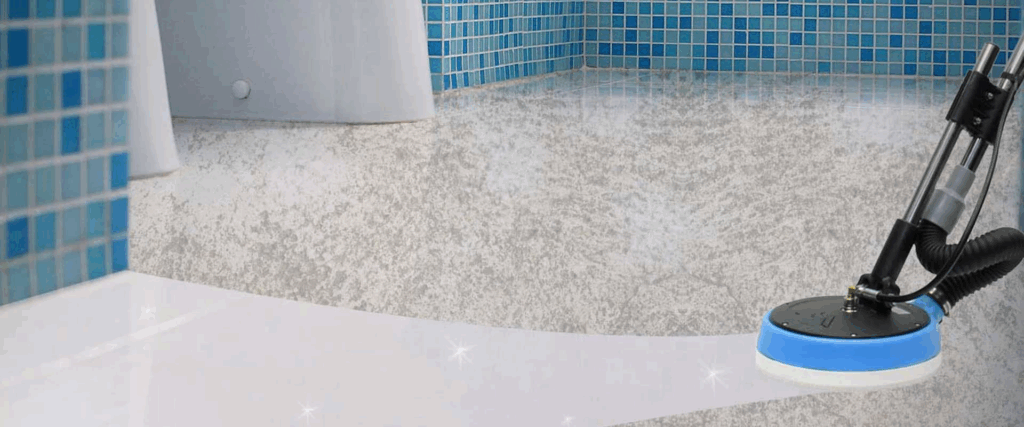
The Benefits of Professional Tile Cleaning
Many homeowners attempt DIY methods to restore their floors, but these often fall short of expectations. Scrubbing with a brush and bleach can offer temporary relief, but it rarely delivers a deep clean. Worse, harsh chemicals can damage grout or dull the tile’s finish.
This is where professional tile cleaning services come in. Trained technicians use specialized equipment and cleaning solutions designed to penetrate deep into grout lines, lifting stubborn stains and eliminating bacteria, mold, and mildew. High-pressure water systems, combined with eco-friendly cleaners, ensure a thorough clean without damaging your flooring.
Restoring the Original Look of Your Floors
One of the most satisfying results of tile and grout cleaning is the visible transformation. After a professional cleaning, floors often look as if they’ve just been installed. The colors are brighter, the grout lines are uniform, and the entire space feels fresher and more hygienic.
This restoration doesn’t just improve the look of your home—it also extends the life of your flooring. By removing harmful substances that can degrade grout and tile over time, professional cleaning preserves your investment and delays the need for costly replacements.
When Should You Schedule Tile and Grout Cleaning?
It’s not always easy to know when your floors need more than just a mop. Here are a few signs it might be time for a deep clean:
Discolored grout lines that don’t improve with regular cleaning
A dull or hazy appearance on your tiles
Persistent odors coming from the floor, often caused by trapped bacteria
Mold or mildew visible in damp areas like bathrooms
Slippery tiles, which may indicate a buildup of residue
Experts recommend professional tile cleaning at least once a year, though high-traffic homes or businesses might benefit from more frequent service.
DIY Maintenance Tips Between Cleanings
While professional cleaning offers the deepest clean, regular maintenance can help keep your floors looking great in between service visits. Here are a few tips:
Use a pH-neutral cleaner designed specifically for tile and grout
Avoid harsh chemicals like bleach or ammonia, which can break down grout over time
Dry mop or vacuum regularly to remove surface debris before it settles into grout
Wipe up spills immediately, especially in the kitchen and bathroom
Seal your grout every year or two to help repel dirt and moisture

The Long-Term Value of Clean Floors
Clean, well-maintained tile floors contribute significantly to the overall appearance and value of your home. Whether you’re hosting guests, planning to sell, or just want to enjoy a more polished living space, investing in routine tile cleaning is a smart move.
Moreover, a hygienic floor isn’t just about aesthetics—it also supports a healthier home environment. Removing allergens, bacteria, and mold can reduce the risk of respiratory issues and skin irritation, especially in households with children or pets.
Tile and grout cleaning is more than just a cosmetic upgrade—it’s a practical way to preserve the beauty and integrity of your floors. Professional services can restore even the dingiest grout lines and dull tiles to their original brilliance, giving your home a refreshed and clean feel. By combining expert care with regular maintenance, you can enjoy stunning tile floors that truly stand the test of time.
So, if your floors are looking tired and you’re tired of scrubbing with no results, consider scheduling a professional tile cleaning service. Your floors—and your feet—will thank you.
Why Regular Carpet Cleaning is Essential for Allergy Sufferers
For many people, allergies are more than just a seasonal nuisance—they’re a year-round battle that impacts quality of life. While most allergy sufferers focus on outdoor triggers like pollen and mold, one of the biggest culprits often lies within the home: your carpet. Carpets may provide a cozy and stylish touch to your living space, but without regular maintenance, they can become a breeding ground for allergens. That’s why regular carpet cleaning is absolutely essential for those dealing with allergies.
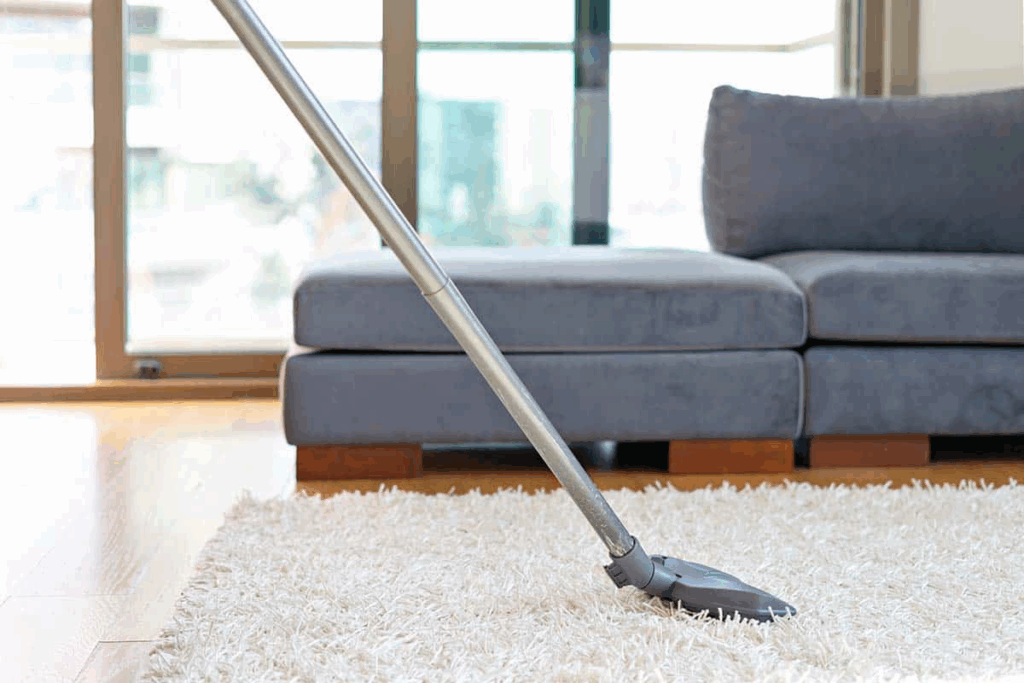
The Hidden Dangers Lurking in Your Carpet
Carpets act like sponges, absorbing everything that comes into contact with them. Dust mites, pet dander, pollen, mold spores, and bacteria can all settle deep within the fibers, creating an environment ripe for allergic reactions. Even if your carpet looks clean on the surface, it may be harboring microscopic irritants that trigger sneezing, coughing, watery eyes, or even more serious respiratory issues like asthma.
What makes carpets especially tricky is their ability to trap allergens and release them back into the air every time someone walks across the room. This constant cycle of allergen exposure can make symptoms persist, no matter how often you vacuum.
Vacuuming Isn’t Enough
While regular vacuuming is an important part of home hygiene, it isn’t enough to fully protect allergy sufferers. Most standard vacuums only clean the surface layer of the carpet, leaving deeper allergens untouched. Some vacuums without HEPA filters may even stir up more allergens into the air, doing more harm than good.
Professional carpet cleaning methods, such as steam cleaning or hot water extraction, go far beyond the surface. These techniques penetrate deep into carpet fibers, effectively removing embedded dust, dirt, and allergens that vacuums can’t reach. They also eliminate moisture buildup, which helps prevent mold growth—a common and dangerous allergen.
Benefits of Regular Carpet Cleaning for Allergy Sufferers
- Reduces Allergen Levels
The most obvious benefit is the significant reduction of allergens. A thorough carpet cleaning removes the dust mites, pet dander, and other irritants that cause allergy flare-ups. The result? Cleaner indoor air and fewer allergy symptoms.
- Improves Indoor Air Quality
Dirty carpets can compromise indoor air quality, which is crucial for those with allergies or asthma. Regular carpet cleaning helps purify the air by removing particles that would otherwise be circulated through your HVAC system. Cleaner air means easier breathing, better sleep, and improved overall well-being.
- Prevents Mold Growth
Moisture from spills, humidity, or poor ventilation can get trapped in carpet fibers, encouraging mold and mildew to grow. These fungi are not just smelly—they’re serious allergens. Regular cleaning helps extract excess moisture and disinfect areas that might become mold hotspots.
- Removes Pet Hair and Dander
If you share your home with furry companions, pet dander and hair are constant issues. These can cling to carpet fibers and linger long after your pet has left the room. Carpet cleaning can lift out these particles more effectively than vacuuming alone, creating a healthier environment for allergy-sensitive individuals.
- Extends Carpet Life
Aside from health benefits, regular carpet cleaning also preserves the look and longevity of your carpet. Cleaner carpets last longer, which is a bonus for both your wallet and your health.
How Often Should You Clean Your Carpets?
For allergy sufferers, cleaning frequency can make a big difference. While the average household may need professional carpet cleaning once or twice a year, those with allergies may benefit from cleanings every 3–6 months. High-traffic areas, homes with pets, or households in humid climates may require more frequent attention.
In between professional cleanings, using a high-quality vacuum with a HEPA filter and addressing spills or messes quickly can help maintain a clean, allergen-reduced environment.
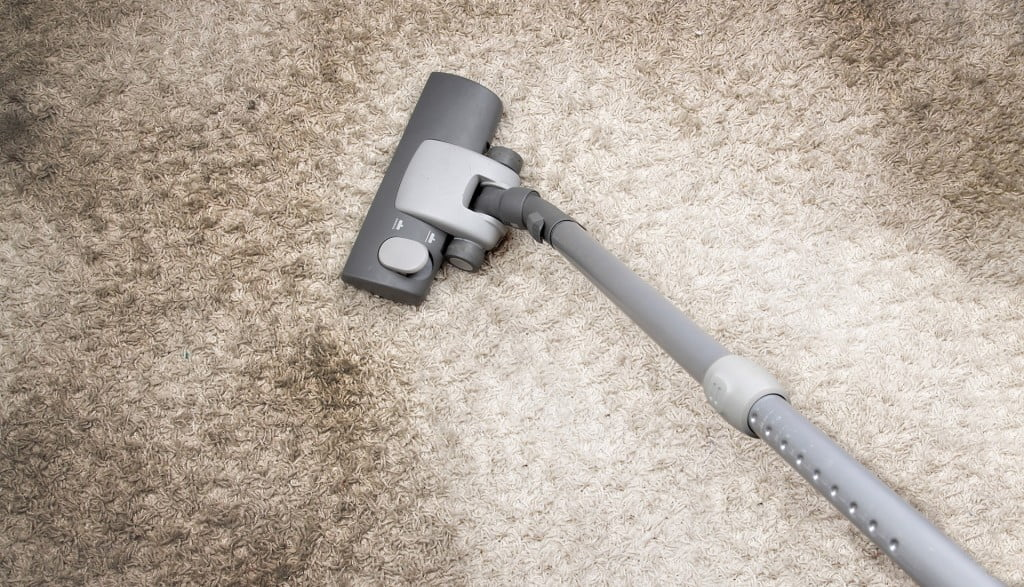
Choose the Right Cleaning Service
When selecting a carpet cleaning service, look for companies that specialize in allergy-friendly treatments. Some offer eco-friendly, non-toxic products and advanced cleaning methods that are ideal for sensitive individuals. Always ask about their cleaning process, the equipment they use, and whether their solutions are safe for people with allergies or respiratory conditions.
Allergy sufferers often go to great lengths to reduce exposure to allergens—using air purifiers, taking medications, and avoiding certain outdoor environments. But the real key to long-term relief may be right under your feet. Regular carpet cleaning is not just about maintaining appearances; it’s a crucial step in creating a healthier home environment. By removing the hidden allergens in your carpet, you can breathe easier and live more comfortably, no matter the season.

